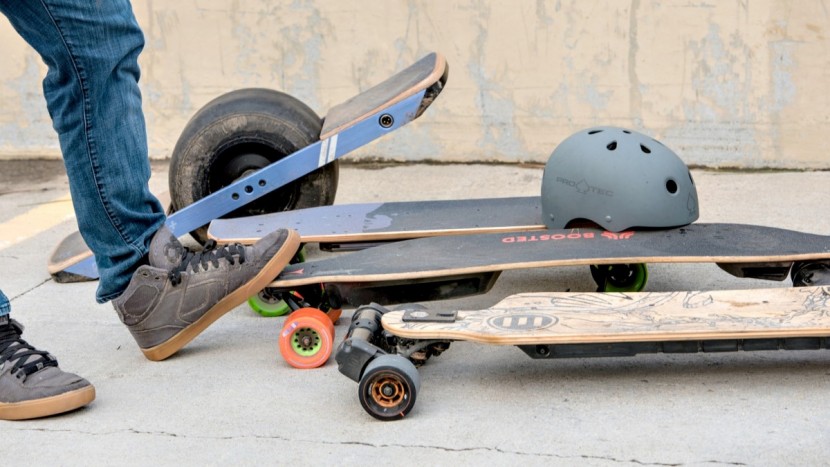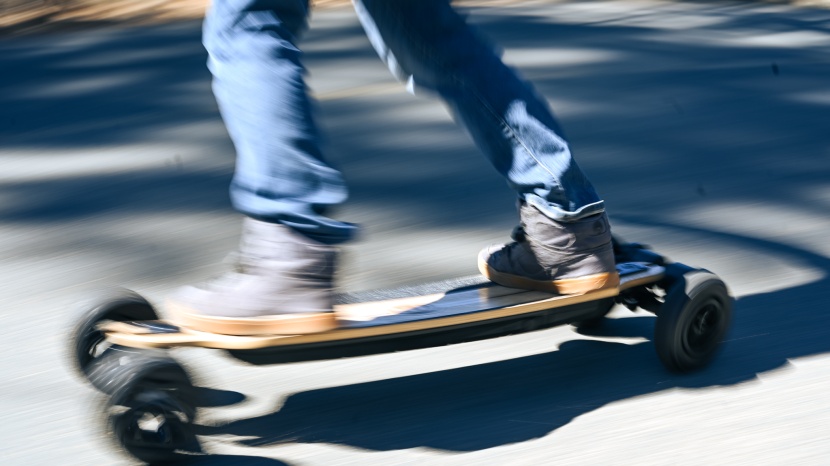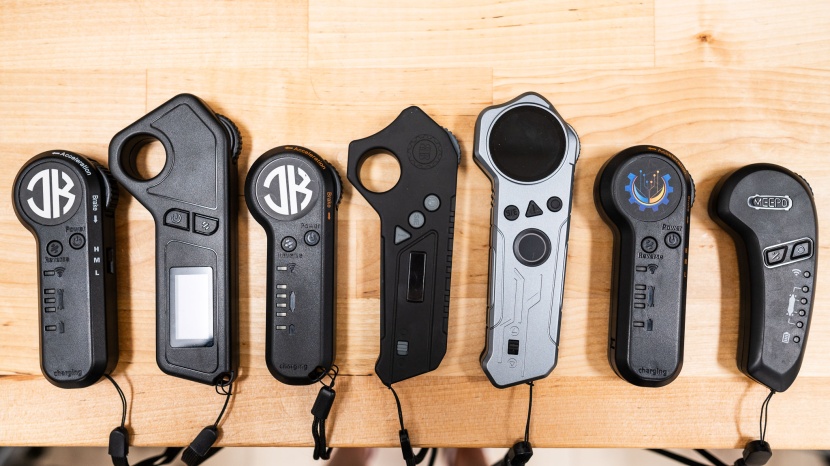We bought the highest rated electric skateboards currently available on the market and put them through a punishing array of tests to see which ones took home the top honors. We split our testing plan into six different metrics and planned a series of tests for each metric to assess the performance of each board and to determine their scores. Each board was tested in its most advanced riding mode throughout unless otherwise noted. In addition, the numbers we found are based on the weight of our tester — an average-sized, adult male — with smaller testers causing the boards to go faster, and larger testers slowing them down, though the relative ranking will remain the same.
Ride Comfort
A smooth ride can make all the difference between enjoying your trip, or finding yourself on the ground with a few injuries so we weighted this category at 30% of the total score. This was one of the more qualitative aspects of our testing process, but we still felt that we gained plenty of insight into the ride-ability of these products over the countless miles that we rode with them. Additionally, measurable aspects, like wheel size and deck length, can be good indicators of a board's comfort, and the flexibility of the deck construction can add more or less cushion when riding over bumpy surfaces. This metric breaks down into three main considerations: deck comfort, handling bumpy terrain, and dealing with unexpected cracks.
Comfort was easy to assess, especially after riding so many laps around the block on each board to assess the range. But on smooth pavement, most boards will feel pretty alright. To really differentiate, we found a section of poorly maintained asphalt and used it as a torture test to see how each board did in less-than-ideal conditions. We then found one large crack and rode over (or tried) at as high a speed as our testers felt comfortable with. Some boards high centered, some only felt a momentary bounce… while others threw, or nearly threw, our riders off. In the end, certain boards rapidly became the go-to choice for quick errands from the office, and others were extremely disliked.
Range
Range is almost as important as ride comfort, as all the fun benefits of having a motorized skateboard go out the window when the battery dies. We gave range 20% of the total score and conducted two separate tests for this metric. The first test measured how far you can expect to travel on flat ground with these boards. We kept things consistent by using either “Eco” mode (if it was available) or a mode in the middle of its speed settings. Then, we started riding each board around a set course on flat pavement. Again. And again. And again, until the board died or it was traveling so slow it was unusable. Our second range test measured the time it took to charge each board from a fully depleted battery. After conveniently running them dead in the previous test, we simply started a timer when we plugged in the board and stopped it when the board indicated the battery was fully charged.
Braking
Not everyone has a need for speed, but everyone will have a need to brake at some point, so we gave this metric 20% of the total. First, we rode down a relatively tame hill with a 10% grade, evaluating whether or not the brakes allowed us to stop and if they allowed us to maintain a controlled descent speed. We then rode down a much steeper 14%-15% grade hill to see if the board could still help control our descent or bring us to a complete stop.
Second, we put each board to the test in a more common scenario: stopping abruptly on flat ground. The idea was to evaluate braking abilities if you saw a surprise obstacle or if a car pulled out right in front of you. We compared the runout distance over multiple trials and gave higher marks to the boards that were able to stop in a shorter distance, ideally stopping us BEFORE plowing into a car.
Speed
Nothing can beat the adrenaline rush of zooming around on a skateboard —- at least for some people. The speed aspect of these products made up 10% of the total score, the idea being that some riders will prioritize this metric in their buying decisions, and some won't. If you group yourself in with the Speedy Gonzales' of the world, you'll want to pay attention here. We conducted two different tests for this metric, designed to test the top speed of each board and its maximum acceleration.
To test top speed, our expert skateboard tester accelerated until the board would go no faster, then entered our testing track and timed how long it took each board to cover a 200' distance. Each board got multiple trials, which we then calculated into an averaged to determine the top speed for each board. To assess acceleration, we shortened the course to 50', put the board in turbo mode (or equivalent), and started at a complete standstill. We then tracked the time it took for each board to complete the course and calculated it into a ft/sec measurement. We also had to do some drag races, for science of course.
Some boards had terror-inducing levels of acceleration, while others definitely did not. For most of these boards, we'd only recommend going top speed if you are an experienced rider and are protected with a helmet and padding.
Hills
Testing hill performance was relatively straightforward. We rode each board up a 10% grade and then a 14%-15% grade (the same two hills we used for our brake tests) and measured the speed with which each board could carry our 190 lb tester up the hill. Most could manage it, a few failed, but only one or two boards could do it with a satisfying punch of power underfoot. This metric was weighted at 10% of the total score.
Beginner Friendly
For this metric, we examined each option's remote/app, beginner mode, and weight to create a combined score worth 10% of each E-board's total. For the remote or app, we examined how intuitive and friendly it was to use as well as its effectiveness. For beginner mode, we looked at its reduced speed limits and how sensitive the throttle/brake was — touchy controls typically make for a more challenging learning experience. For weight, we simply looked at how light (or heavy) each option was, also considering its carrying system, just in case.
Interested in comparing how individual models did? Or deciding if an electric skateboard is a worthy investment for you? Take a look at our comprehensive electric skateboard review for detailed information on how each model performed.






